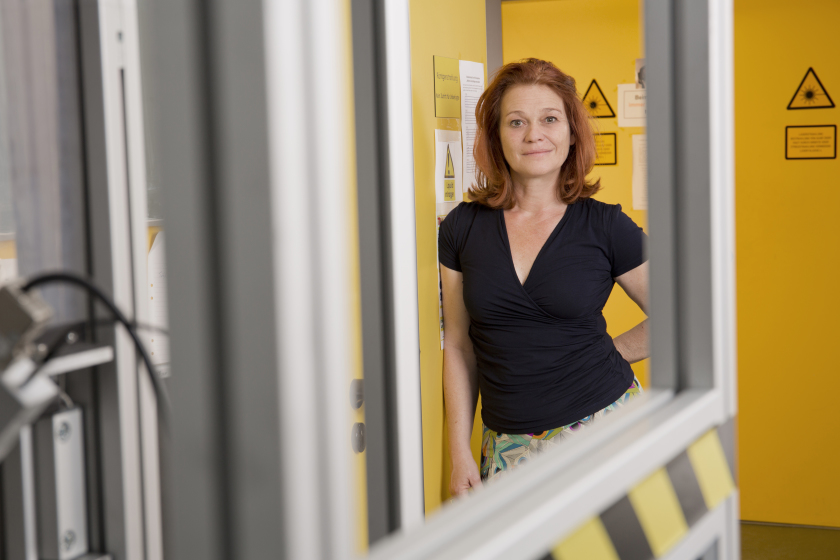HZB and TU Berlin: New joint research group at BESSY II

Prof. Birgit Kanngießer heads a joint research group on X-ray methods, which is funded by TU Berlin and HZB. © Martin Weinhold
Birgit Kanngießer is setting up a joint research group to combine X-ray methods in laboratories and at large-scale facilities. In particular, the physicist wants to investigate how X-ray experiments on smaller laboratory instruments can be optimally complemented with more complex experiments that are only possible at synchrotron sources such as BESSY II.
Prof. Dr. Birgit Kanngießer is professor of analytical X-ray Physics at the Technische Universität Berlin, where she also heads a large research group. Together with the Max Born Institute she has build up BLiX (Berlin laboratory for innovative X-ray technologies), which brings established X-ray methods from the synchrotron into the laboratory. At BESSY II she was involved as one of the first users from the early on.
Now HZB and TU Berlin are funding a joint research group headed by Birgit Kanngießer to strengthen this cooperation. This should also accelerate the exchange of knowledge and technology between BESSY II and university laboratories.
The joint research group is called 'Combined X-ray methods at BLiX and BESSY II - SyncLab'. On the TU Berlin side, the Berlin laboratory for innovative X-ray technologies (BLiX) is integrated. Kanngießer will initially focus on evaluating how time-resolved measurements using near-edge X-ray spectroscopy in the soft X-ray range on smaller instruments and at BESSY II could complement each other. Further analytical and imaging X-ray methods are to follow in the future.
arö
https://www.helmholtz-berlin.de/pubbin/news_seite?nid=22060;sprache=en
- Copy link
-
The twisted nanotubes that tell a story
In collaboration with scientists in Germany, EPFL researchers have demonstrated that the spiral geometry of tiny, twisted magnetic tubes can be leveraged to transmit data based on quasiparticles called magnons, rather than electrons.
-
Ernst Eckhard Koch Prize and Innovation Award on Synchrotron Radiation 2025
At the 27th BESSY@HZB User Meeting, the Friends of HZB honoured the dissertation of Dr Enggar Pramanto Wibowo (Friedrich-Alexander University Erlangen-Nuremberg). The Innovation Award on Synchrotron Radiation 2025 went to Prof. Tim Salditt (Georg-August-University Göttingen) and Professors Danny D. Jonigk and Maximilian Ackermann (both, University Hospital of RWTH Aachen University).
-
Bright prospects for tin perovskite solar cells
Perovskite solar cells are widely regarded as the next generation photovoltaic technology. However, they are not yet stable enough in the long term for widespread commercial use. One reason for this is migrating ions, which cause degradation of the semiconducting material over time. A team from HZB and the University of Potsdam has now investigated the ion density in four different, widely used perovskite compounds and discovered significant differences. Tin perovskite semiconductors produced with an alternative solvent had a particular low ion density — only one tenth that of lead perovskite semiconductors. This suggests that tin-based perovskites could be used to make solar cells that are not only really environmentally friendly but also very stable.
